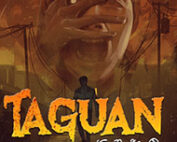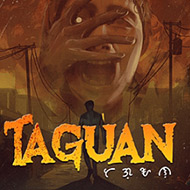Taguan Game Online

Description
Taguan places you in the shoes of David Lagani, an everyday Filipino worker whose quiet life is shattered when a series of home break ins and disappearances begins. What starts as creeping dread turns into an intense journey of hiding and seeking, as David must navigate the silence of his apartment and the shifting landscapes of fear, guilt, and the uncanny. This focused experience makes every shadow matter and every sound feel like a threat.
Darkness, Fear & Survival
In Taguan, tension comes not from loud monsters but from the stillness of a world under threat. The story plays out in low poly visuals, immersing you in an atmosphere where the ordinary becomes ominous. David’s routines—checking doors, turning off lights—take on new meaning when danger looms. The ambient noise, shifting light, and distant footsteps draw you deeper into suspense.
“Taguan” means “to hide” in Filipino, and the game uses this literally and metaphorically. You hide from threats but also confront inner dread. The experience is short but impactful, designed to be completed in one sitting while leaving a lingering effect.
Mechanics & Exploration
While anchored in atmospheric horror, Taguan emphasizes subtlety over combat. Instead of weapons, you rely on observation, stealth, timing, and environmental interaction. Objects can be moved, doors locked, lights turned off. Every decision matters: do you risk investigating that noise or retreat to shadows?
- Walking and Listening: Quiet movement and attention to sound cues reveal hidden danger.
- Interactable Objects: Everyday items can hide clues, serve as distractions, or deepen immersion.
- Environment as Threat: Lights flicker, textures distort, and time behaves strangely, forcing adaptation.
Since the experience is compact—roughly one hour—every moment counts. Revisiting rooms, reconsidering assumptions, and staying alert in familiar spaces is crucial.
The Hidden Message & Emotional Core
Beyond horror, Taguan carries a quiet emotional core, reflecting the vulnerability of routine and the way fear seeps in when safety vanishes. The horror is both external and internal: the game asks you to hide while confronting your own shadows.
- Notice how ordinary actions—making coffee, locking doors—gain weight under stress.
- Pay attention to subtle changes—sounds that were steady now tremble, shapes shift unexpectedly.
- Revisit areas—some elements reveal themselves only after progress, deepening the narrative.
This layering of mechanics and theme makes Taguan memorable. Each flicker, note, and scare adds not just fear but a story about dignity, home, and vulnerability.
What to Expect & Replay Thoughts
Taguan’s compact design means a single-session playthrough, yet its impact lingers. The pacing builds from quiet unease to full dread, reflecting your journey. The demo previews the experience, while the full version expands interactions and narrative depth.
For those who enjoy horror with weight—not just jumps but lingering atmosphere—Taguan delivers. Mechanics are understated, the story is personal, and every corner reinforces tension. After finishing, you might find yourself listening for footsteps in your own quiet room, questioning what it means to hide when danger is both real and internal.


































 For Boys
For Boys  For Girls
For Girls 




















































































